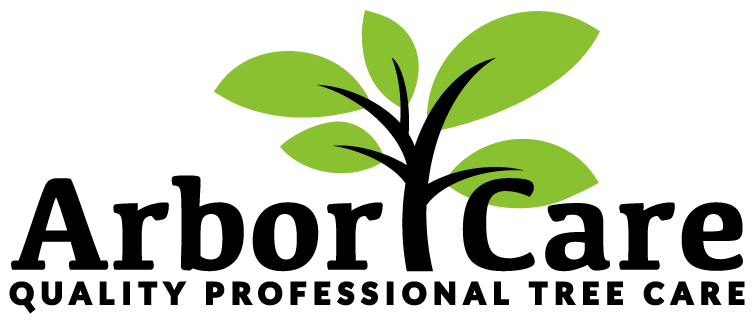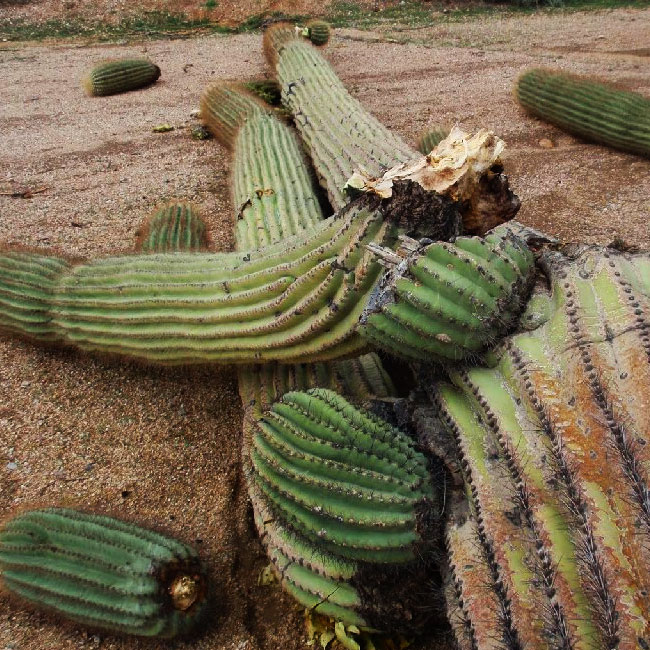Downed trees, branches, and trash can overwhelm homeowners and businesses. Storm damage response in Mesa and Tempe, Arizona, has been our specialty for 15 years. Never try to remove a downed tree—call Arbor Care. Storm damage response for tree removal and cleanup is fast with our personnel. You should assess storm-damaged trees on your property. Read on to learn more.
Be Proactive!
Many Sonoran Desert residents are familiar with the monsoon season in late July. It usually runs from mid-June to late-September. It will bring heavy humidity and stunning lightning and thunder. They leave behind many damaged trees and occasionally property.
Arizona has a monsoon season every year, however intensity varies. Prepare for its arrival early to safeguard your trees, property, and family from the monsoon. Be proactive with trees! An unexpected tree fall in your yard would likely cost more than any money spent on preventive tree maintenance, even if it doesn’t damage buildings, automobiles, fences, or other structures. Not even the finest preparation can protect a tree against monsoon storm winds. There are many ways to prepare to reduce storm damage to your trees. Most importantly, don’t neglect your trees. Look at them occasionally! Prevention is worth a pound of cure! Damaged trees are often unfixable.
Arizona Monsoons
“Monsoon” comes from Arabic “mausim” meaning “season” or “wind shift.” The weather event is caused by a wind direction change. Arizona gets winter wind from California and Nevada. Summer winds change direction. Wind from the Pacific Ocean and Gulf of Mexico brings up to one-third of Arizona’s annual rainfall! This wind shift causes three months of rain, dust storms, strong thunderstorms, and uncommon tornadoes. Especially harmful are “downbursts.” These strong “vortex rings” have a vertically revolving air circle. Downbursts start with powerful wind bursts near the earth. Depending on size and length, downbursts are dubbed “macroburst” or “microburst.” Arizona trees suffer the most from monsoon storm wind. high rain can make a tree more vulnerable to high winds since even healthy roots weaken in damp soil. If the tree collapses, most of the root system will be exposed.
According to FEMA, “Three-fourths of the damage that trees incur during storms is predictable and preventable.” Certified Arborists, certified by the International Society of Arboriculture, provide the best tree care. Because of their skill, they can spot tree flaws before they become big hazards or that you may not have detected. As they deteriorate, these faults might cause branch failure, splitting, or tree death. However, your arborist is not solely responsible for tree care. You can also accomplish much. Call us if unsure! Our Certified Arborists can inspect your yard’s trees for free and propose ways to make them more wind-resistant. Although there are no assurances, “storm proofing” your trees and property is worth the effort.
Post Storm Damage
Cleanup is needed when storms damage trees. Storm damage debris is not urgent, but if huge parts of your tree block public roadways or pose safety risks, call us immediately. How broad the storm damage is will affect our reaction time. Document any property damage (except trees) with photos and contact your insurance carrier immediately. Most insurance companies need the tree company’s invoice to detail how much of the cleanup job involves home, fencing, automobile, and other structure damage. Request specifics when filing a claim as your insurance may not cover anything else. Please let us know if there are any restrictions to optimize your reimbursement and reduce the financial impact of storm-related property damage. A tree staff can clean up quickly because there is no climbing involved. Cutting brush, chopping wood, and carrying waste are the main tasks. Stump grinding and removal of large rounds of wood that have been cleared out of the road can be delayed if the storm was severe and schedules are backlogged. Dedicated to storm damage response, a professional tree staff will ensure public and family safety before moving on to the next urgent call.




